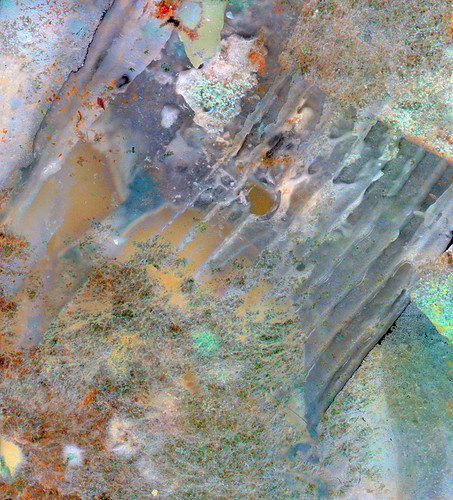
Many homes across the country experience mold growth in areas where dampness is an issue, especially in basements. It can be visibly seen on walls and floors or hidden behind or beneath them. It comes in many standard colors like blue, green, black, white and gray, or it can be a combination of these colors. Some molds are toxic and can cause serious health problems, but some pose little to no danger; in fact they are even helpful.
Mold
Video of the Day
There are approximately 100,000 different species of mold and about 150 types of household mold. Mold spores are found everywhere but grow only when dropped into an environment that is damp. They then attach to material they can feed on, like ceiling tiles, drywall, wallpaper and insulation. Once attached, some types release toxic gases known as microbial volatile organic compounds during the evaporation process. These toxic gases are known as mycotoxins and can cause health problems in humans if inhaled.
Video of the Day
Categories
The health risks associated with mold has caused some countries to classify them into hazards. Hazard A should be removed immediately due to infection risks and toxin creation. Hazard B means exposure over time can cause allergic reactions Hazard C should be removed but have no known health risks to humans, though they can cause possible structural damage
Blue Mold
Blue mold is primarily penicillium and is classified as hazard B and C. It can be found on the walls and in the insulation of damp areas like basements. Subspecies of penicillium can also be found on foods like fruit and cheese. One species of penicillium is responsible for the development of antibiotics.
Other Mold Types
Each individual species of mold has many subspecies and can appear as one specific color or combine to create hues of blue-green. Cladosporium is green, black, brown or gray and is very common in homes. Classified as B or C, it can be found in walls, insulation, dust, and wood. Aspergillus is brown, yellow, green, white, black or gray. Classified as A or B, it is found in walls and insulation as well as paper products, clothing, and soil. Ulocladium-is gray or black. Classified as B and C, it can be found around windows, on walls, and dusty areas. Acremonium is brown, white, or gray. Classified as A, B and C, it is found in drywall and insulation. Stachybotrys is black, Class A mold, found in very damp areas. Alternaria is gray or black, Class B mold, found around windows, walls, and damp areas.
Mold Control
Controlling moisture in your home can halt mold invasion. Areas damaged by excess water should be cleaned within 48 hours of exposure. Check and repair all damaged sources of water. Clean hard surfaces with detergent and water and discard material that is absorbent.